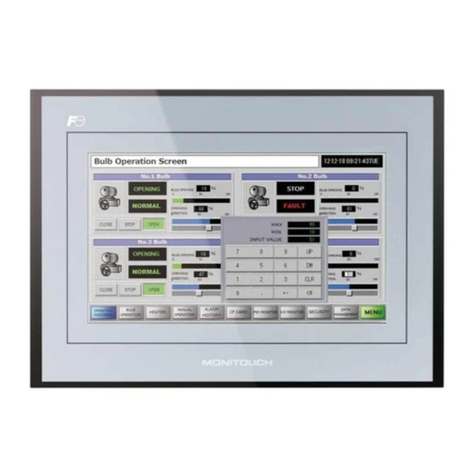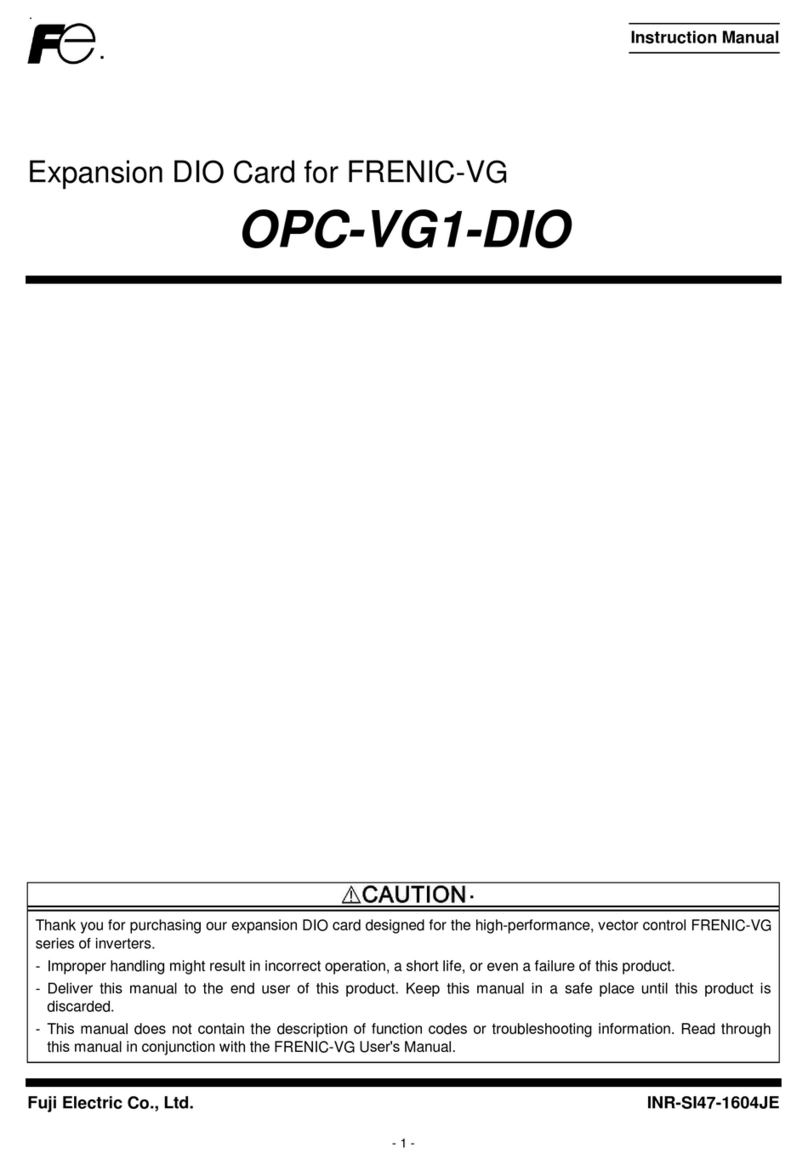
1
Preface
Thank you for purchasing our OPC-LM1-PS1 inverter option card. Before using the option card, read this manual carefully
to understand how to use the option card correctly. Improper handling blocks correct operation or causes a short life or
breakdown. This manual does not describe how to use the inverter. Refer to the FRENIC-Lift Instruction Manual for details
about the inverter. Keep this manual on hand for reference when using the option card.
Safety Precautions
Note the following items when using the option card. Improper use may result in unexpected failure, electric shock, or
possible injury.
(1) Application
WARNING
•This product must not be used for any life support system or other purpose directly related to human safety.
•Although this product is manufactured under strict quality control, be sure to install appropriate safety devices for
applications where drive failure could result in serious accident or material loss.
An accident could occur.
(2) Installation and Wiring
WARNING
•Wait at least five minutes after turning off the power before installing or wiring the option card.
Use a circuit tester or similar instrument to check the voltage before performing installation or wiring.
(Check whether the charge lamp goes off.) Otherwise, electric shock may occur.
•Discharge statistic electricity from your body before handling the option card. Never touch the option card with wet
hands; otherwise, accident or electric shock may occur.
•No foreign matter such as screws, metal patches, lint, chips, and dust in the option card.
There is risk of fire or accident.
•Do not damage or stress the wiring; otherwise, accident or electric shock may occur.
•Do not connect the reducer between the motor and the encoder.
There is a risk of accident.
CAUTION
•Do not install or operate a damaged option card or one that is lacking parts; otherwise, an injury may occur.
•Since noise is generated by the inverter, motor, and wiring, carefully monitor surrounding sensors and devices for
abnormal operation. There is a risk of accident.
(3) Operation
WARNING
•Check and adjust parameters before operation. Improper parameters may cause an unexpected action for some
machines. There is a risk of accident.
CAUTION
•High-speed operation can be set easily for the inverter. Fully check motor or device performance before changing the
setup; otherwise, accident may occur.
(4) Maintenance and Inspection, and Parts Replacement
WARNING
•Wait at least five minutes after turning off the power before inspecting the option card. (Check whether the charge lamp
goes off.) There is a risk of electric shock.
•Only authorized personnel are allowed to maintain and inspect the option card and replace parts; otherwise, electric
shock or injury may occur.
•Never modify the option card; otherwise, electric shock or injury may occur.
CAUTION
•Do not execute a megger test (insulation resistance measurement).
(5) Discard
CAUTION
•Since the option card uses soldering lead, treat it as an industrial waste when discarding it.
































